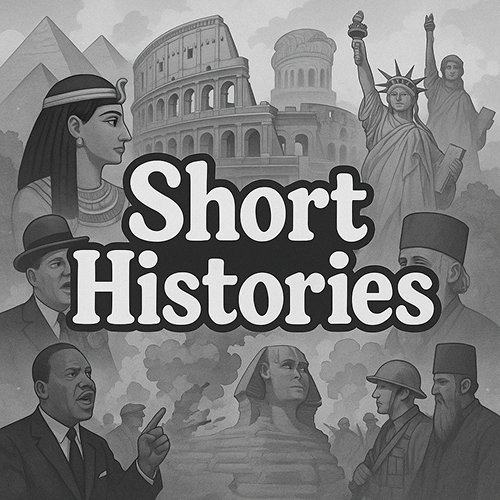When Mehmed II rode into Constantinople in 1453, the world gasped but that conquest was not the finale, it was the overture. Under Mehmed’s successors, the Ottoman Empire evolved from a warrior state into a civilization of brilliance, ambition, and refinement. Yet it would be under Suleiman I, known as Kanuni (The Lawgiver) to his people and The Magnificent to the West, that the empire would soar into its Golden Age.
He was born in 1494 in Trabzon, the son of Sultan Selim I, a ruthless and austere ruler who had extended Ottoman rule over the holy cities of Mecca and Medina, defeating the Mamluks and absorbing much of the Arab world. When Selim died in 1520, Suleiman ascended the throne at just 26 years old, lean and bookish, yet raised in the fires of statecraft. He would reign for 46 years, the longest of any Ottoman Sultan and during that time, the empire would reach its zenith territorially, culturally, and administratively.
Suleiman’s vision was imperial, yes but also deeply personal. He did not just desire lands; he wanted legacy. He surrounded himself with poets, scholars, architects, astronomers, and jurists.
Under his leadership, the Ottoman Empire stretched from Hungary to Yemen, from Algeria to Iraq. The Mediterranean was practically an Ottoman lake and his conquests were dazzling:
- In 1521, he captured Belgrade, the gateway to central Europe.
- In 1522, Rhodes, bastion of the Knights of St. John, fell to him after a masterfully executed siege.
- In 1526, he shattered Hungarian forces at the Battle of Mohács, leaving the kingdom decapitated and inviting Ottoman influence deep into the heart of Europe.
But it was his failed siege of Vienna in 1529 that signaled the limits of his European expansion. The weather, the walls, and sheer distance combined to halt Ottoman advance. Still, the message was clear: this empire could challenge Christendom itself. At home, Suleiman was no less formidable. He undertook a vast legal codification, compiling centuries of sharia (Islamic law) and imperial edicts into a cohesive legal system, the Kanun, earning his title Lawgiver. This legal framework addressed land rights, taxation, criminal justice, and court procedure, blending Islamic principles with pragmatic statecraft.
Beneath him stood a complex but highly efficient bureaucracy. At the heart of it was the Divan, the imperial council, headed by the Grand Vizier. The empire was divided into vilayets (provinces), governed by beys and pashas, who collected taxes and maintained order. And behind that administrative machinery stood one man, Ibrahim Pasha, Suleiman’s boyhood friend and Grand Vizier, a Greek-born convert who wielded immense influence in the early part of Suleiman’s reign. But no Golden Age is without its shadows.
The imperial court of Istanbul, though glittering, was laced with intrigue. The Harem, often misunderstood as merely sensual, was a political hub. Women, eunuchs, and concubines vied for influence. One woman, in particular, would change everything. Hürrem Sultan, a former Ruthenian slave girl, captured the Sultan’s heart. Unlike traditional consorts, she bore him multiple children and became his legal wife, a break from centuries of dynastic custom. Her rise scandalized the court but Hürrem was brilliant. She maneuvered court politics deftly, aligned with key viziers, and saw her son Selim placed in the line of succession, ultimately becoming Sultan after Suleiman.
The Golden Age was also built in stone and ink. Suleiman commissioned the greatest architect of the Ottoman world, Mimar Sinan, a former Christian engineer turned genius builder. Sinan’s works included:
- The Süleymaniye Mosque in Istanbul, a crown of domes and minarets, a rival to Hagia Sophia itself.
- The Selimiye Mosque in Edirne, considered his masterpiece.
Sinan designed over 300 structures, bridges, aqueducts, caravanserais, each blending symmetry, spirituality, and imperial power.
Artistic life flourished. The palace supported miniature painters, calligraphers, and chroniclers. The Topkapı Palace, already a marvel, became the epicenter of Ottoman culture. Science and medicine progressed. Astronomers like Taqi al-Din refined astronomical tables and built observatories. Ottoman cartographers mapped the world with precision, trading ideas with Persians, Arabs, and Europeans alike.
Ottoman control of the Silk Road and spice routes turned Istanbul into a global nexus. Traders from Venice, Alexandria, Isfahan, and Samarkand met in its bazaars. The Ottomans minted gold coins, levied complex customs duties, and maintained caravans of camels across deserts and ships across seas.
Religiously, Suleiman presented himself as both Caliph and Padishah, the shadow of God on Earth. He patronized Sunni Islam, restored holy sites, and built hospitals and soup kitchens but Christians and Jews under Ottoman rule, known as dhimmis, were largely protected under the millet system, which allowed religious communities autonomy in exchange for loyalty and taxes. This tolerance, while imperfect, allowed cities like Salonika, Sarajevo, and Baghdad to thrive as multicultural hubs.
As Suleiman aged, grief darkened his final years. Ibrahim Pasha, once beloved, was executed under suspicion of treasonous ambition. Hürrem died in 1558, leaving the Sultan devastated. In 1561, his favorite son, Mustafa, was strangled by palace guards, an act some blamed on Hürrem’s intrigue. In 1566, at age 72, Suleiman led one final campaign against Hungary. At the Siege of Szigetvár, he died in his tent, his death kept secret for weeks to maintain troop morale. His heart was buried near the battlefield but his body was returned to Istanbul.
He left behind an empire that had become the greatest Islamic power in the world, a capital that rivaled Rome and Beijing and a legacy that still echoes in marble, manuscripts, and minarets.
Next Time: The Ottoman Empire Final Part | The Sick Man of Europe
As European powers industrialized and expanded, the once-mighty Ottomans faced internal decay, nationalist uprisings, and foreign interventions. This is the sobering end of a world empire and the birth of modern nations from its ruins.
Please go back to top & scroll gently

